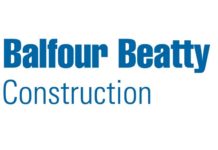Rising construction costs and fluctuating interest rates have narrowed profit margins for developers. Securing favorable financing terms now directly determines whether projects succeed or fail.
The Debt Service Coverage Ratio (DSCR) is a critical metric that can significantly improve your financing options.
What is DSCR, and Why Do Construction Lenders Care?
DSCR measures a property’s ability to cover debt obligations with its income. For construction projects, it represents the projected income relative to anticipated debt payments once the project is operational.
The formula is straightforward: DSCR = Net Operating Income ÷ Total Debt Service
Lenders focus on this metric because it quantifies risk. A higher DSCR indicates the property generates more income relative to debt, providing a buffer for unexpected costs or revenue fluctuations.
Most lenders require a minimum DSCR of 1.25, meaning the property must generate 25% more income than needed for debt payments. However, DSCR requirements vary based on project type, market conditions, and specific lender policies.
Problems with Traditional Construction Financing
Traditional construction loans create significant barriers for developers. They assess the developer’s personal income and credit rather than the project’s viability, imposing restrictive debt-to-income ratios that prevent portfolio expansion.
Extensive documentation requirements delay project timelines, while personal guarantees put developers’ assets at risk. With rising interest rates, margins have become even tighter, making optimal financing critical.
These limitations particularly hurt experienced developers managing multiple projects or those with complex financial situations.
Five Strategies to Optimize Your Project’s DSCR
1. Create Accurate Pro Forma Projections
Flawed financial projections frequently undermine financing applications. Developers often submit unrealistic rental rate assumptions and underestimated vacancy rates. Many provide incomplete operating expense calculations, fail to account for tax reassessments, and omit management fees when properties are self-managed.
For stronger projections, build your financial models using current market rental data with submarket specificity. Document vacancy rates from genuinely comparable properties and include comprehensive expense tracking with appropriate reserves.
Provide written evidence for all major assumptions and use conservative revenue growth projections. Lenders immediately recognize the difference between thorough analysis and speculative numbers.
2. Design with NOI Maximization in Mind
Design decisions directly impact DSCR through their effect on income and expenses. Many projects suffer from unit mixes that don’t match local market demand and amenities that cost more to maintain than the premium they generate.
Inefficient systems create ongoing operational costs, while poor materials require frequent replacement or maintenance. Inefficient space utilization reduces rentable square footage, directly impacting revenue potential.
Solutions include implementing a data-driven unit mix based on actual absorption statistics and selecting high-impact, low-maintenance amenities that truly drive rent premiums. Energy-efficient systems reduce common area costs throughout the property lifecycle.
Durable materials with long replacement cycles minimize ongoing capital expenditures. Layouts that maximize rentable area while minimizing common space directly improve NOI calculations. These elements strengthen DSCR projections when presented to lenders.
3. Implement Phased Development Approaches
Large, all-at-once developments create unnecessary financing challenges. They require higher upfront capital, extend the time to initial revenue generation, increase market risk exposure, and create greater financing complexity.
Strategic phasing offers multiple advantages. Building revenue-generating components first creates cash flow that supports financing for later phases.
Early phase performance demonstrates project viability, reducing the overall project risk profile. Phasing allows for design adjustments based on market feedback rather than committing entirely to unproven concepts. Lenders consistently prefer phased approaches for larger projects due to the distributed risk profile they create.
4. Secure Pre-Leasing and Income Guarantees
Vacancy risk significantly impacts DSCR calculations. Developers frequently approach lenders with no committed tenants, unsubstantiated demand projections, and a general lack of income certainty.
Securing commercial pre-leasing agreements with credit-worthy tenants provides concrete evidence of project viability. Residential pre-leasing campaigns with deposits demonstrate market demand before completion. Master lease arrangements provide income floors that strengthen DSCR calculations. Anchor tenant commitments secured before construction completion substantially reduce perceived risk.
Corporate housing agreements for multi-family developments can guarantee baseline occupancy levels. These documented income commitments dramatically improve DSCR projections and financing terms.
5. Structure Equity Strategically
Equity structure directly impacts DSCR calculations. Common problems include insufficient equity contributions necessitating larger loans and inappropriate debt instruments increasing debt service requirements. Many developers work with equity partners with misaligned objectives and fail to leverage preferred equity options effectively.
Optimizing equity percentage to achieve target DSCR metrics can significantly improve financing terms. Structuring mezzanine financing enhances senior debt terms without diluting ownership. Preferred equity with specific return parameters can bridge funding gaps without affecting DSCR calculations.
Strategic partnerships bring additional resources beyond capital that strengthen overall project viability. Sophisticated equity structures can improve DSCR without sacrificing developer returns.
How to Present DSCR Metrics to Lenders
Developers often fail to demonstrate DSCR understanding to lenders, missing opportunities for better terms. Present sensitivity analyses showing DSCR under various scenarios to demonstrate financial sophistication.
Highlight specific design elements that strengthen financial performance beyond typical projects. Provide stress test results demonstrating downside protection capabilities. Articulate knowledge of the lender’s specific DSCR requirements to show you’ve done your homework.
This approach positions you as a lower-risk borrower who understands project finances thoroughly.
Choosing the Right Financing Partner
Lenders calculate and evaluate DSCR differently. Some variations include NOI calculation methods and which expenses they include or exclude from calculations.
DSCR minimums vary significantly for different property types, and market adjustment factors in underwriting can differ substantially between lenders. Treatment of management fees and reserves affects DSCR calculations, as do stabilization period expectations.
Research these variations before approaching lenders. For specific DSCR requirements across different lender types, consult comprehensive resources that compare current standards.
Conclusion
DSCR optimization provides developers with a significant competitive advantage in securing construction financing.
By implementing these five strategies—creating accurate financial projections, designing for NOI maximization, phasing development strategically, securing pre-leasing commitments, and structuring equity effectively—developers can substantially improve financing terms.
Before approaching lenders for your next project, analyze your DSCR under various scenarios and implement these optimization strategies. Research specific DSCR requirements to ensure your project exceeds industry standards.




























